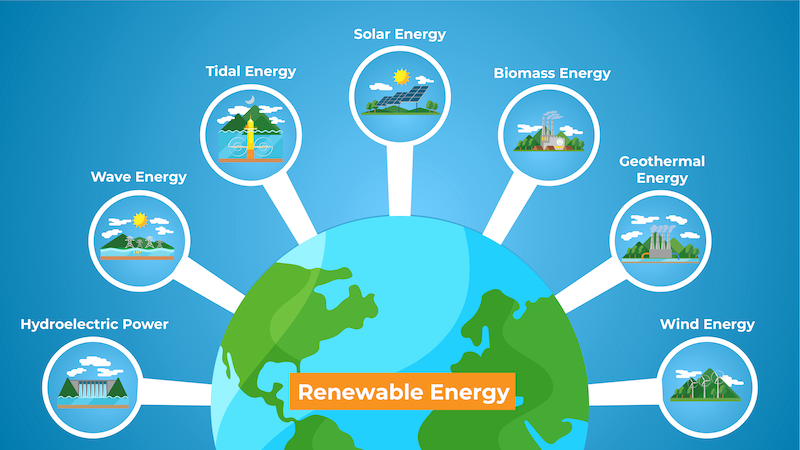
Current energy sources are releasing emissions at an alarming rate. These emissions are directly linked to heat waves, droughts, polar melting, and other dangerous health and environmental risks. Carcinogens released are increasing risk of death from strokes, heart disease, lung cancer, and other respiratory illnesses. Oil spills have contaminated water and destroyed wildlife habitat. How can this be avoided? Alternate energy. While technology and resources are still being developed, reducing the amount of carbon emissions can have lasting positive benefits. However, we are very dependent on fossil fuels for day-to-day satisfaction but trying to choose clean energy can have a larger impact.
So, what type of clean energy is there and how accessible is it to the public? The most popular renewable energy sources currently are solar, wind, hydro, tidal, geothermal, and biomass energy. Nuclear energy is another type of energy source, but it is not renewable. It is zero-carbon and will help countries reach net zero carbon.
Solar energy works by capturing energy from the sun and converting it into a useable form. Sunlight is the most abundant resource, and the amount of solar energy that reaches the earth’s surface can power the Earth’s energy needs for a year. The downside of solar energy is that it is dependent on the season, time of day, and the geographical location. Machines harnessing this energy needs a way to store it as well, since it is not a continuous source which adds to the complexity.
Wind is a plentiful and renewable source. Wind farms consist of multiple wind turbines that spin and harness electricity. Turbines are used to drive generators that then feed electricity into an electrical grid that powers large areas. Like solar energy, these must be in windy places. The energy source is variable because the weather is variable as well.
Hydro power is one of the largest renewable energy sources. Companies will build a dam or barrier and then a controlled flow of water can flow through it. As the flow of water goes through the barrier, it will drive a turbine that generates electricity. This source is more reliable than both solar and wind because it is a controlled water source. However, in certain situations depending on the water source and type of property, it can have faults. Tidal streams produce more energy than a regular river. Another form of hydro energy is tidal energy. It used twice-daily tidal currents to drive a turbine. It is more predictable and can substitute for hydro when it is not producing enough energy.
Geothermal energy harnesses natural heat under the earth’s surface and can be directly used to heat homes or other heating requirements. This is heavily dependent on geothermal location, for countries such as Iceland have significantly more geothermal heat. Countries such as the United Kingdom do not have a sustainable of geothermal heat.
The last non-carbon renewable resource is biomass energy. This is the conversion of solid fuel made from plants into electricity. Unfortunately, it requires burning organic materials to produce electricity, which may release harmful carcinogens. On the other hand, converting agricultural waste into solid, liquid, and gas fuel, it generates power at a lower environmental cost.
/cdn.vox-cdn.com/uploads/chorus_image/image/56872747/shutterstock_326698985.0.jpg)